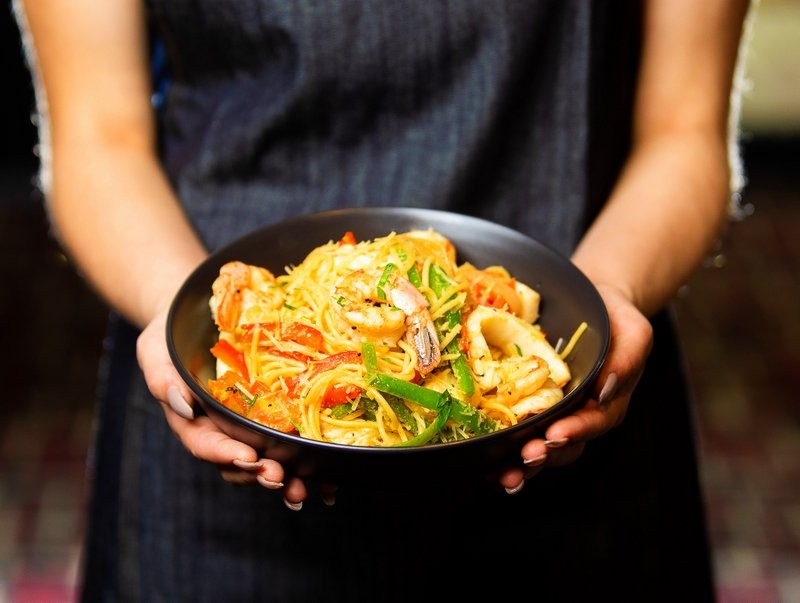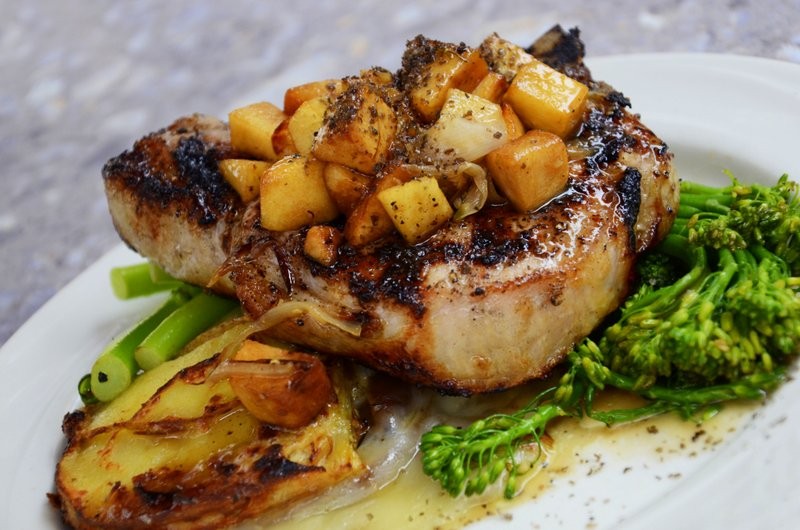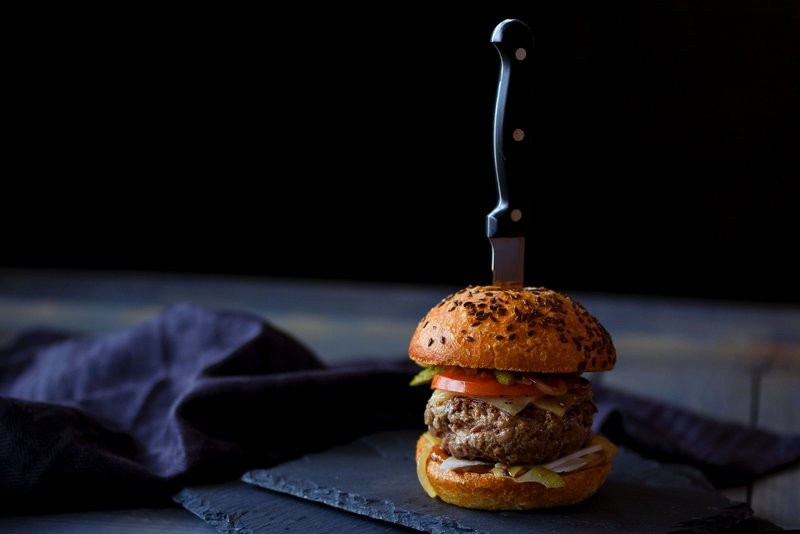You’ll see the top 2020 Australian food trends reflected everywhere in Australian life from supermarkets and cafes to top restaurants. These new food trends include a European cuisine comeback, sustainability, plant-based diets, conscious drinking and a war on food waste. If you are looking for the latest 2021 trends, pop on over to my post on the top 2021 Australian food trends.
This is what food lovers should expect based on my experience from more than 20 years as a food writer for major magazines and daily newspapers.
My top Australian food trends for 2019 were pretty spot on – kombucha or cauliflower anyone? Food trends of sustainability and farm to table continue to shape our dining habits, while food as medicine is touted as the answer to everyone’s problems – just put some more cinnamon on your breakfast and everything will be fine!
Is this going to be the year we all turn vegan? I don’t think so. It is one of the juggernaut dietary trends for 2020 leading the field, but there is plenty more fat to chew such as Australian restaurant trends and what dining will look like in the future.
10 Top 2020 Australian food trends
- European cuisine makes a comeback
- Think before you eat – is it sustainable?
- Food preferences are the rule
- Plant-based diet focus
- Food home delivery services kill the restaurant industry
- Diversity at the food front line
- Conscious drinking
- Shaken not stirred
- Coffee with a twist
- War on food waste
UPDATE: COVID-19 has thrown a curveball at the hospitality industry. With no end in sight, it is difficult to even see what is happening around us until we are on the other side. Under these conditions, trends are going to take a lot longer to emerge and some may flounder.
The biggest turn around is the role that food delivery services have played in supporting the restaurant industry in a world where home delivery has been the only option for weeks. It will be interesting to watch this new partnership in the future.
What are the top 2020 Australian food trends? Top photo by Lidye on Unsplash

Who doesn’t love Italian food? Photo by Peter Dawn on Unsplash
European cuisine makes a comeback
The annual report on Australia’s Top 50 Restaurants from Open Table, a leading online restaurant reservation platform, revealed that European cuisine is making a comeback. The cuisine was claimed by 32 per cent of the restaurants in their top 50 making it a strong contender for the top 2020 Australian food trends.
That’s restaurants serving Western-style food where meat is usually prominent, and sauces are frequent. Expect potato, bread, pasta, dumplings and pastries. For many people, this is comfort food, and it’s not hard to see why this simplified way of cooking and eating is a salve for modern diet confusion.
OpenTable’s Senior Restaurant Relations Manager, Tim Domelow says European cuisine remains perennially popular as it’s always evolving due to its rich history and diverse range of cultures filtering throughout the region.
“Modern European cuisine has always used innovative techniques and ingredients and now more than ever we are seeing a real emphasis on sustainability and mindful eating,” says Tim.
“It will be interesting to see how Australian restauranteurs incorporate local ingredients and seasonal trends to keep up with local diners’ appetites.”
Bush tucker and Australian bushfood flavours continue to influence menu flavours. While there is an increasing number of Australian-themed spices available commercially, the backyard bush tucker available for many Australians to grow at home adds another dimension to homegrown.

Chickens foraging around their chicken caravan at 9Dorf Farms.
AUSTRALIAN FOOD TRENDS 2020 – Think before you eat
Awareness of new food trends such as sustainability, nose-to-tail eating and farm to table has become more widespread and now can be grouped under mindful eating.
It’s no longer big news when a menu trumpets that they are using local produce or Australian grown ingredients, but as people seek to answers to climate change, there are more questions than ever.
What concerns me is, are restaurants sticking to their guns on this? It’s not always easy or cheap to choose one of these roads, but once it’s on the menu, people assume they are getting what’s promised.
Keep up the excellent work restaurants, cafes and eateries who are following these paths and those who are slipping, get back on track, please.
Slow Food Noosa’s Snail of Approval program shows locals and visitors how they can choose to eat at high welfare restaurants and cafes and buy ethical products throughout the region.
Ethical farming is another part of this trend, and this is my preferred way to source produce. I’m concerned about the welfare of chickens, and I prefer to eat sustainable Australian seafood.
Here’s where you can eat ethically in Australia and New Zealand. Personally, I hope this Australian food trend for 2020 really takes off and more people give consideration to where their food is grown and how it is produced.

Vegetables are a top 2020 Australian food trend. Photo by Chantal Garnier on Unsplash
Food preferences are the rule
Vegans, Pegans, Flexitarians and Vegetarians, if you don’t have a food preference nowadays, you are almost boring.
I’ve been to functions where 48 out of 100 people had a food preference which requires food delivery with the precision of a battlefield manoeuvre.
Veganism has gone from being a weird variation on vegetarianism to become the third fastest-growing market in adapting lifestyles and a strong 2020 Australian food trend. (Euromonitor International, 2019). The sector is expected to be valued at over three billion dollars by 2030 (Deloitte, 2019). Australian restaurant trends reflect the increasing interest in vegan food.
This marketing opportunity has not escaped the attention of the big players in food production, and supermarket shelves are groaning with their highly processed products. Read their labels and check out the ingredients folks because there’s nothing that sounds healthy in many of them.
Each to his own, I say, but if you choose to be vegan, please make careful choices when it comes to processed foods. Here is some food for thought on the dark side of plant-based food.
What’s a Pegan?

Can you still eat a steak on a Plant-based diet? Photo by Alex Munsell on Unsplash
Plant-based diets
You might wonder what’s the difference between a plant-based diet and a vegetarian or vegan diet? Does it just sound better or less confrontational?
Well, according to some they can be the same or not because a plant-based diet can include animal products such as eggs, milk and honey. You can probably slip in the odd slice of bacon and slab of steak too, particularly if they have been ethically sourced. It’s based, not ruled by plants.
Just to complicate things further, there’s also a whole foods plant-based diet where people focus on eating whole fruits and vegetables, whole grains and minimizing or abstaining from animal products. An interesting study by the British Sustainable Food Trust says that UK vegans should switch from soy milk to cow’s milk if they want to help the planet.
The big question in my mind is where do you get your protein from with these diets. If it is from highly processed foods on supermarket shelves, you might want to check the ingredients labels to see what you are really putting into your body.

Food delivery by bicycles? Yes, this happens. Photo by Kai Pilger on Unsplash
COVID-19 UPDATE
During the recent lock downs home delivery services have kept some restaurants afloat as they pivoted to offer takeaway meals. Not everyone has chosen to use delivery platforms with some businesses preferring to use their own staff and divert them into deliveries. There has certainly been a softening of the divide between the two sectors and it will be interesting to see how this transforms when restaurants are once again allowed to operate normally.
PRE-COVID – Food home delivery services kill the restaurant industry
The new scourge on our roads is the home delivery motorcycle riders who jump corners and footpaths to get their deliveries done. They are everywhere, which means that the food home delivery is showing no signs of slowing.
I’ve almost given up on food home delivery. Chips, burgers, pizza, gnocchi and burritos, the mainstays of home delivery menus, all taste a little tired by the time they reach your home.
As well, according to Restaurant and Catering Australia (R&CA), soaring costs plus delivery platforms are squeezing restaurants beyond their means. They say restaurants need bums on seats to make ends meet or restaurants across the country will be forced to raise prices to stay in business.
R&CA’s 2019 annual Benchmarking Report* (see below for an explanation on the report) showed that restaurants are struggling to make ends meet with food businesses dealing with rising below-the-line costs and delivery platforms that demand more than their fair share of the pie.
Restaurants are struggling
“This year (2019), we are seeing more restaurants struggle than ever before,” said R&CA’s CEO, Wes Lambert.
“There are a number of rising and additional costs that consumers don’t consider which are putting extreme financial pressure on restaurant owners. Food prices have soared as farmers combat the drought and costs such as rents, wages and utility prices continue to rise.
“Finally, restaurant, cafe and catering businesses are left to contend with the hefty chunk delivery platforms take out of the profit. It’s a battle that business owners are slowly losing.
So, what’s the answer here? How about going out to your favourite restaurant for a meal or pick up your food instead of using a delivery platform for a change. Use it or lose it is the R&CA’s message.
Convenience is a strong driver
“Convenience is obviously a strong driver for patrons, but it is important diners understand that restaurants will close if something doesn’t change soon. Our call to the Australian dining public is to be prepared for their local restaurant, cafe or caterer raising the prices of their meals to ensure they survive.
“These businesses cannot continue to pay the high commission forced on them by delivery platforms on top of rising costs across the board. Something has to give, or businesses will be forced to close.”
*The 2019 R&CA National Benchmark Report covers favoured bank and superannuation funds, business expectations, outdoor seating areas, business costs, skills and labour, digital technology, use of social and digital marketing channels and the importance of serving Australian wines.

African cuisine restaurants are increasingly popular Photo by Suad Kamardeen on Unsplash
Diversity at the food front line
The trend of migrants bringing and sharing their cuisine to another country has long been a part of Australia’s food story.
Where would we be now without the Greek milk bars, Chinese takeaways and Italian family restaurants that moved the Australian palate away from meat and three veg?
The increasing popularity of African and Chilean restaurants, as revealed in Open Tables Australia’s Top 50 Restaurants list, is part of a global trend towards diversity in cuisines.
“Consumers continue to seek out a range of flavours and differing dishes,” says OpenTable’s Senior Restaurant Relations Manager, Tim Domelow.
“Australia’s vibrant multi-cultural dining scene has created an opportunity for diners to experience more cuisines, flavours and spices as featured in African and Chilean restaurants. We also find that as the weather heats up, Australian’s love of the outdoors sees many opt for more health-conscious meals, adopting the Mediterranean diet.”
However, this newfound enthusiasm for different flavours is not coming at the expense of old favourites says Tim.
“Even though we are seeing a rise in diners venturing out to try new and emerging cuisines, we know that traditional preferences still remain popular, especially around the holiday season where people love to revisit old favourites.”

Max Babajev, InterContinental Sydney’s Cortile Lounge Bar Manager, builds a cocktail with Seedlip.
Conscious drinking
More people are saying yes to a drink but no to the alcohol!
A surprising 42 per cent of bartenders surveyed for the annual Kimpton Hotels & Restaurants Culinary + Cocktail Trends Forecast were excited to embrace the no-alcohol culture as part of their overall bar experience in the year ahead. (Yay team!)
This report gathers the opinion of more than 130 seasoned bartenders, sommeliers and general managers from the Kimpton’s 75-plus restaurants and bars across 37 cities in the United States and in selected locations in Europe and the Caribbean and it reflects Australian trends.
“From the highest-selling distilled water Seedlip to bartenders using rotovap or ultra-sonic sound wave machines to extract delight and unique flavours such as pine cones or fern leaves to enhance our guest’s experiences, I don’t see the non-alcoholic trend slowing down anytime soon,” says Tim Wilson from InterContinental Hayman Island Resort.
“Building balance in a cocktail without alcohol allows creative thinking and a deeper understanding of each ingredient,” says Max Babajev InterContinental Sydney’s Cortile Lounge Bar Manager.
As one of the early adaptors of non-alcoholic cocktails, Max has created a zero-alcohol cocktail menu focusing on cocktail craftsmanship with unique ingredients such as handcrafted cucumber syrup and pure elderflower.
“The culture of overconsumption is changing, and innovative bars and restaurants are beginning to adapt. The modern diner is more educated than ever in their decisions. We are moving away from mass production and focusing on fine produce and skill, which is a positive change for all.”

InterContinental Sydney Double Bay’s Tim Tam Espresso Martini.
Coffee with a twist
Our love affair with coffee is far from over with new and exciting ways to consume this favourite fix headlining in 202.
In Queensland, guests of InterContinental Sanctuary Cove Resort can trial the newly launched High Coffee menu, with their signature Smoking Hot Chocolate.
“Guests respond to the theatrical elements of this drink – the bartender’s interactive smoke machine, the swirling cedarwood and the rich milk chocolate smell the smoke creates,” says Food & Beverage Manager Lucy Blanch.
Penny Wolff, CEO of Wolff Coffee Roasters in Brisbane and a World Barista Championship Sensory Judge and World Latte Art Championships Visual Judge, says the trend in coffee is towards handcrafted, ground, extracted and then freeze-dried Specialty Coffee.
“It’s nothing like the instant we all know like blend 43. Instant Speciality is delicious and super convenient. We have our own called Instant Wolff, and we always sell out of it,” says Penny.
InterContinental Sydney Double Bay is known for its twist on a classic, the Tim Tam Espresso Martini. This happy hour favourite is a cheeky treat after a long day in the office (available in Stillery Bar Monday to Friday, from 5pm-7pm). The cocktail was created by Restaurant and Bar Manager, Giovanni Chianese, who describes the drink as when “two classics meet at the bar”.

Here’s to a more sustainable future. Photo by Volodymyr Hryshchenko on Unsplash
War on food waste
Rising food costs spurred by drought and bushfires is going to make everyone, from chefs to home cooks, think a little harder about making the best use of what they have. There’s going to be less wastage and more sustainable cooking and eating, and that’s a good thing.
When it comes to plastic waste, everyone can do their bit here. When you see plastic straws, cutlery or plates, call them out!
Explore more Australian food trends
One of the best ways to discover new food trends and the most popular foods in Australia is to add a few food festivals to your travelling list. Australia has an extensive range of top food festivals so start planning your adventure.
These are the latest 2021 Australian food trends.


Me too, although occasionally I weaken. The dining experience out is so much better.
I think it is height of laziness to use these food delivery services. I would much rather go out to enjoy a meal and support a local restaurant.